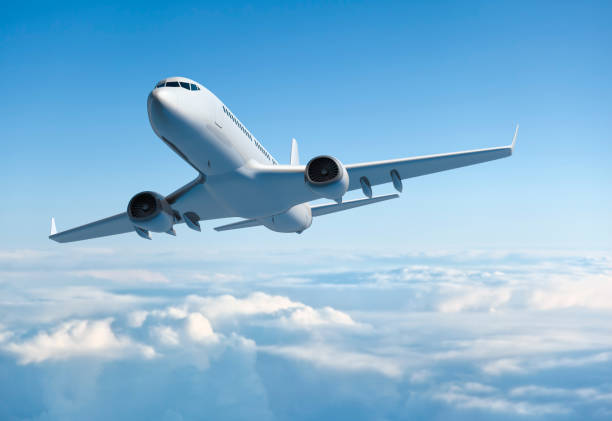Sustainable aviation is a critical focus for the aviation industry as it confronts the challenges of environmental impact and fuel efficiency. As global awareness of climate change and environmental issues grows, the aviation sector is taking significant steps to reduce its carbon footprint and enhance fuel efficiency. This article explores the key strategies and innovations driving sustainable aviation, including advancements in technology, alternative fuels, and industry initiatives.
### **1. Reducing Carbon Emissions**
**Aircraft Efficiency Improvements**
One of the primary goals in sustainable aviation is to improve the fuel efficiency of aircraft, which directly impacts carbon emissions. Modern aircraft designs are increasingly incorporating advanced technologies to achieve this goal.
– **Aerodynamic Design:** New aircraft models feature enhanced aerodynamic designs, such as winglets and advanced wing shapes, which reduce drag and improve fuel efficiency. The Boeing 787 Dreamliner and the Airbus A350, for example, utilize advanced composites and streamlined designs to achieve significant fuel savings.
– **Engine Technology:** Innovations in engine technology, such as high-bypass turbofan engines and quieter, more efficient engines, contribute to reduced fuel consumption and lower emissions. The development of geared turbofan engines is one such advancement that improves efficiency by optimizing the relationship between the fan and core of the engine.
**Operational Efficiency**
Enhancing operational efficiency is another key aspect of reducing carbon emissions. This includes optimizing flight routes, reducing taxi times, and implementing efficient air traffic management practices.
– **Performance-Based Navigation:** Performance-based navigation (PBN) systems allow for more precise flight paths, reducing the distance flown and, consequently, fuel consumption. Advanced navigation systems enable airlines to minimize detours and avoid congestion, leading to fuel savings.
– **Air Traffic Management:** Modern air traffic management systems, such as the Next Generation Air Transportation System (NextGen) and Single European Sky ATM Research (SESAR), focus on improving airspace management and reducing delays. By optimizing flight routes and reducing holding times, these systems contribute to overall fuel efficiency.
### **2. Sustainable Aviation Fuels (SAFs)**
**Alternative Fuels**
Sustainable aviation fuels (SAFs) are a promising solution for reducing the carbon footprint of aviation. SAFs are derived from renewable sources or produced using carbon capture technologies and offer a lower environmental impact compared to traditional jet fuels.
– **Biofuels:** Biofuels are produced from organic materials such as algae, agricultural waste, and municipal solid waste. These fuels can be blended with conventional jet fuel to reduce emissions. Companies like Neste and Gevo are leading the way in developing and producing biofuels for aviation.
– **Synthetic Fuels:** Synthetic fuels, produced using processes like electrolysis and carbon capture, offer the potential for a significant reduction in lifecycle carbon emissions. Companies such as Synthomer and ZeroAvia are working on synthetic fuel technologies that could revolutionize the industry.
**Implementation and Challenges**
The widespread adoption of SAFs requires addressing several challenges, including production scalability, infrastructure development, and cost. Collaborative efforts between airlines, fuel producers, and governments are crucial for overcoming these barriers and accelerating the transition to sustainable aviation fuels.
### **3. Electrification and Hybrid Propulsion**
**Electric Aircraft**
Electrification is an emerging trend in aviation aimed at reducing reliance on fossil fuels and lowering emissions. Electric aircraft use electric motors powered by batteries or fuel cells, offering a more sustainable alternative to traditional jet engines.
– **Urban Air Mobility:** Electric vertical takeoff and landing (eVTOL) aircraft are being developed for urban air mobility, providing an eco-friendly solution for short-distance travel within cities. Companies such as Joby Aviation and Lilium are leading the development of eVTOL aircraft.
– **Regional Electric Aircraft:** Electric aircraft for regional flights are being designed to reduce operating costs and emissions. Pipistrel and magniX are working on electric aircraft projects that aim to make regional air travel more sustainable.
**Hybrid Propulsion**
Hybrid propulsion systems combine traditional jet engines with electric power sources to enhance efficiency and reduce emissions. These systems offer a transitional solution as the industry moves towards fully electric aircraft.
– **Hybrid Aircraft Projects:** Boeing and Airbus are exploring hybrid propulsion systems to improve fuel efficiency and reduce environmental impact. Hybrid aircraft could offer benefits such as lower fuel consumption and reduced noise.
### **4. Industry Initiatives and Collaborations**
**Global Commitments**
The aviation industry has made significant commitments to sustainability through various initiatives and collaborations.
– **ICAO CORSIA:** The International Civil Aviation Organization’s (ICAO) Carbon Offsetting and Reduction Scheme for International Aviation (CORSIA) aims to offset the growth in carbon emissions from international flights. The scheme requires airlines to purchase carbon credits to offset their emissions, contributing to overall carbon neutrality.
– **Airline Sustainability Programs:** Many airlines have implemented their own sustainability programs, focusing on initiatives such as reducing single-use plastics, optimizing fuel usage, and investing in sustainable technologies. For example, Delta Air Lines and British Airways have committed to reducing their carbon footprints through various measures.
**Research and Development**
Ongoing research and development efforts are crucial for advancing sustainable aviation technologies and practices.
– **Partnerships and Consortia:** Collaborative efforts between industry stakeholders, including manufacturers, airlines, and research institutions, drive innovation in sustainable aviation. Programs such as the Clean Sky initiative in Europe and the Sustainable Aviation Fuel Users Group (SAFUG) support research and development in sustainable technologies.
– **Government Support:** Governments play a vital role in supporting sustainable aviation through funding, regulations, and incentives. Policies and grants aimed at promoting research and adoption of green technologies are essential for accelerating the transition to a more sustainable aviation industry.
### **Conclusion**
Sustainable aviation is a key focus for the industry as it seeks to address environmental impact and fuel efficiency challenges. Through advancements in aircraft design, the adoption of sustainable aviation fuels, electrification, and hybrid propulsion, the industry is making significant strides towards reducing its carbon footprint. Industry-wide initiatives and collaborations further support these efforts, driving innovation and progress in sustainable aviation. As technology continues to evolve and sustainability becomes increasingly important, the aviation industry is poised to lead the way in creating a more eco-friendly and efficient future for air travel.




